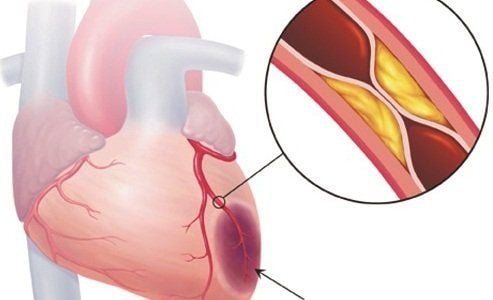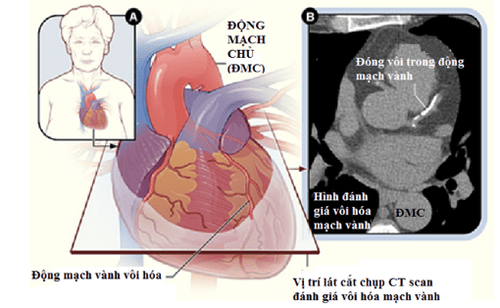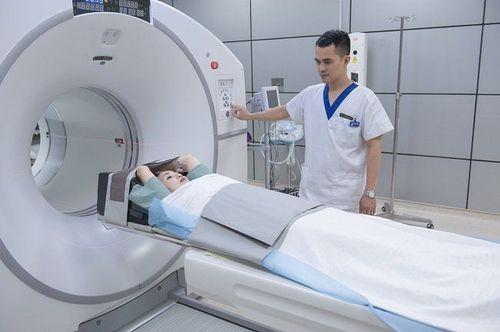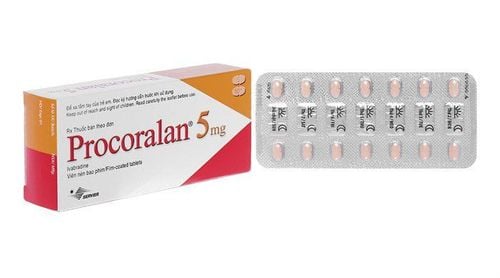This is an automatically translated article.
The article was professionally consulted by Specialist Doctor I Vo Cong Hien - Radiologist - Radiology Department - Vinmec Nha Trang International General Hospital.Computed tomography coronary computed tomography allows the detection of coronary calcification points to early detect the patient's risk of myocardial ischemia. Doctors can use that to calculate the 10-year risk to decide who in this group needs treatment.
1. What is calcified coronary computed tomography?
Computed tomography coronary calcification, also known as coronary calcification CT scan, is an exploratory method that looks for calcium or calcified spots on the walls of coronary (heart) arteries. Calcification in the coronary arteries (coronary calcification) is an early sign of coronary artery disease. Long-term coronary calcification forms atherosclerotic plaques that accumulate in the coronary artery walls. This plaque narrows the coronary arteries and reduces blood flow to the heart, causing chest pain or a heart attack.Computed tomography coronary calcification is a method of using a non-contrast computerized tomography machine to visualize calcified atherosclerotic nodules of the coronary artery system on tomographic images. Therefore, it is only allowed to determine the degree of calcification but not the degree of coronary stenosis.
Calcified coronary computed tomography is indicated for people with cardiovascular risk factors such as hypertension, dyslipidemia, smoking, family history of coronary artery disease, and men. At old age, the screening and assessment of coronary artery calcification score helps determine whether the patient's risk factors for future cardiovascular events are low, moderate or high.

Chụp cắt lớp vi tính mạch vành tính điểm calci hóa được chỉ định với những người có nguy cơ tim mạch
2. Significance of coronary computed tomography computed tomography calcification score
CT scan to evaluate coronary calcification helps predict the risk of chest pain due to coronary artery disease or heart problems in the future to help patients control coronary disease and have preventive treatment. Calcification results are expressed as coronary calcium score. Calcification scores are divided into 4 levels: 0 points: No calcifications 1 - 99 points: Mild calcifications, low risk, annual mortality or myocardial infarction < 1% 100 - 399 calcifications moderate calcification, moderate risk, annual rate of death or myocardial infarction 1% - 3% 400 points: Severe calcification, high risk, annual mortality or myocardial infarction > 3% When the calcification score is ≥ 400, even lower, but concentrated in a large plaque that obscures the coronary lumen and interferes with the image, giving inaccurate results, so it is necessary to combine coronary angiography through cardiac catheterization. In addition, the severity depends on the location of the calcification in which coronary artery is located. distribution, quantity. For example, the common trunk or proximal segments are more dangerous than the mid and distal segments Although computed tomography coronary calcification does not accurately assess the degree of coronary stenosis, CT scans correlate well with the degree of fibrosis. coronary atherosclerosis. However, it should be noted that there are many cases of severe calcification but only in the coronary artery wall and do not cause narrowing of the coronary artery lumen. On the contrary, there are cases of non-calcifications who still have coronary artery stenosis due to the presence of non-calcified atherosclerotic plaques.
Chỉ định chụp cho các bệnh nhân các yếu tố nguy cơ của bệnh động mạch vành
3. Indications, contraindications to computed tomography coronary angiography
3.1. Indication Screening for future coronary heart disease risk factors in patients at risk for coronary artery disease but without chest pain and symptomatic chest painFor asymptomatic patients with chest pain . Indication of imaging for patients with risk factors for coronary artery disease such as smoking, hypertension, dyslipidemia, etc., it is necessary to calculate the total risk of coronary artery disease in order to have a screening plan for the disease. coronary artery disease, management of risk factors and prevention of coronary artery disease. The coronary calcification score will assist clinicians in risk identification and primary prevention decisions for these patients. For patients with chest pain symptoms. Indications for imaging to predict obstructive coronary artery disease in patients with chest pain symptoms. Pharmacological evaluation of nonobstructive and obstructive coronary artery disease. Depending on the specific case, the doctor has different instructions for taking pictures. 3.2. Contraindications No absolute contraindications Relative contraindications during pregnancy. The coronary calcification score also only suggests coronary atherosclerosis, not providing accurate information about the degree of coronary artery stenosis due to atherosclerosis. However, with the advantages of ease of implementation, no need for contrast injection, no dependence on the drugs being used as well as the ability to exercise... doctors can assign a coronary calcification survey to plan. treatment plan for the patient.
Vinmec International General Hospital is currently applying coronary computed tomography without beta block for patients wishing to diagnose coronary artery disease. With a system of facilities, modern medical equipment and a team of experts and doctors with many years of experience in medical examination and treatment, patients can be assured of examination and treatment at the Hospital.
Please dial HOTLINE for more information or register for an appointment HERE. Download MyVinmec app to make appointments faster and to manage your bookings easily.













